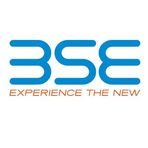Asia-Pacific Markets Navigate Mixed Signals Amid Economic Data and Corporate Moves
June 27, 2025, 6:13 pm

Location: India, Maharashtra, Mumbai
Employees: 501-1000
Founded date: 1992

Location: India, Maharashtra, Mumbai
Employees: 1001-5000
Founded date: 1875
The Asia-Pacific markets are like a ship caught in a storm, swaying between optimism and caution. Investors are grappling with mixed signals, particularly from China’s industrial data, which has cast a shadow over the region. The National Bureau of Statistics reported a 9.1% year-on-year decline in industrial profits for the first five months of 2025. This marks the steepest drop since October 2024, when profits fell by 10%. Such figures are vital, as they reflect the health of China’s factories, mines, and utilities.
Japan’s Nikkei 225 index, however, is a beacon of resilience. It climbed 1.43% to close at 40,150.79, crossing the 40,000 mark for the first time since January. The broader Topix index also saw gains, rising 1.28% to 2,840.54. This upward momentum is bolstered by Japan’s core consumer price index, which rose 3.1% year-on-year in June, albeit slower than the previous month’s 3.6% increase.
In stark contrast, South Korea’s Kospi index dipped 0.77% to 3,055.94, while the Kosdaq fell by 0.81% to 781.56. Hong Kong’s Hang Seng Index closed 0.17% lower at 24,284.15, and mainland China’s CSI 300 index dropped 0.61% to 3,921.76. Australia’s S&P/ASX 200 also ended the day down by 0.43% at 8,514.20. Meanwhile, India’s Nifty 50 managed a slight uptick of 0.32%, with the BSE Sensex up 0.29%.
Across the Pacific, U.S. stock futures showed signs of life, rising as investors awaited critical data releases, including inflation and consumer sentiment. The S&P 500 had recently climbed to within striking distance of a new record high, closing at 6,141.02, just shy of its all-time high of 6,147.43 set in February. The Nasdaq Composite also advanced, closing at 20,167.91, inching closer to its record.
The backdrop of tariff negotiations adds another layer of complexity. The impending “liberation day” tariffs are set to take effect on July 8, following a 90-day pause. The deadline for an EU deal to avoid steep tariffs is July 9. The White House has downplayed the urgency of these negotiations, suggesting potential extensions could be on the table.
In the midst of this economic ballet, Hong Kong and Chinese stocks faced turbulence. The Hang Seng Index ended lower, reflecting investor uncertainty as trade deal details between Beijing and Washington emerged. The three worst performers on the Hang Seng were China Life Insurance, China Resources Land, and Budweiser Brewing Company, all of which saw declines of over 2%.
Japan’s Nikkei 225, despite its recent gains, is still down 0.78% since the start of the year. However, the best-performing stocks on the index included Kawasaki Heavy Industries, Disco Corp, and Sumitomo Pharma, which saw impressive gains of 7.75%, 7.11%, and 6.72%, respectively.
Retail sales in Japan rose by 2.2% year-on-year in May, a slowdown from the previous month’s 3.3% increase. This reading, the lowest in three months, fell short of economists’ expectations of a 2.7% rise. Meanwhile, Japan’s unemployment rate remained steady at 2.5%, with job openings per job seeker slightly declining.
In the corporate realm, Rubicon Research Limited made headlines with its acquisition of Alkem Laboratories’ Pithampur manufacturing unit for Rs. 149 crores. This all-cash deal enhances Rubicon’s manufacturing capabilities, particularly in steroids, hormones, and high-potency products. The facility, located in a Special Economic Zone, is FDA-inspected and offers potential for future expansion.
Rubicon’s CEO emphasized that this acquisition aligns with their strategy to bolster their presence in the U.S. market. The company has seen remarkable growth, with revenues more than doubling from Rs. 3,135.67 million in Fiscal 2022 to Rs. 8,538.89 million in Fiscal 2024. This growth trajectory positions Rubicon as the fastest-growing Indian pharmaceutical formulations company among its peers.
As Rubicon gears up for an initial public offering, it stands out as the only Indian pharmaceutical player focused entirely on regulated markets. With 69 active FDA-approved products and a strong emphasis on research and development, Rubicon is poised for further expansion.
In summary, the Asia-Pacific markets are navigating a complex landscape of economic data and corporate developments. While Japan’s Nikkei shows resilience, other markets are grappling with uncertainty. The interplay of industrial profits, consumer sentiment, and corporate acquisitions will shape the region’s economic narrative in the coming weeks. Investors are watching closely, ready to adjust their sails as new data emerges. The journey ahead is fraught with challenges, but opportunities abound for those willing to navigate the waters.
Japan’s Nikkei 225 index, however, is a beacon of resilience. It climbed 1.43% to close at 40,150.79, crossing the 40,000 mark for the first time since January. The broader Topix index also saw gains, rising 1.28% to 2,840.54. This upward momentum is bolstered by Japan’s core consumer price index, which rose 3.1% year-on-year in June, albeit slower than the previous month’s 3.6% increase.
In stark contrast, South Korea’s Kospi index dipped 0.77% to 3,055.94, while the Kosdaq fell by 0.81% to 781.56. Hong Kong’s Hang Seng Index closed 0.17% lower at 24,284.15, and mainland China’s CSI 300 index dropped 0.61% to 3,921.76. Australia’s S&P/ASX 200 also ended the day down by 0.43% at 8,514.20. Meanwhile, India’s Nifty 50 managed a slight uptick of 0.32%, with the BSE Sensex up 0.29%.
Across the Pacific, U.S. stock futures showed signs of life, rising as investors awaited critical data releases, including inflation and consumer sentiment. The S&P 500 had recently climbed to within striking distance of a new record high, closing at 6,141.02, just shy of its all-time high of 6,147.43 set in February. The Nasdaq Composite also advanced, closing at 20,167.91, inching closer to its record.
The backdrop of tariff negotiations adds another layer of complexity. The impending “liberation day” tariffs are set to take effect on July 8, following a 90-day pause. The deadline for an EU deal to avoid steep tariffs is July 9. The White House has downplayed the urgency of these negotiations, suggesting potential extensions could be on the table.
In the midst of this economic ballet, Hong Kong and Chinese stocks faced turbulence. The Hang Seng Index ended lower, reflecting investor uncertainty as trade deal details between Beijing and Washington emerged. The three worst performers on the Hang Seng were China Life Insurance, China Resources Land, and Budweiser Brewing Company, all of which saw declines of over 2%.
Japan’s Nikkei 225, despite its recent gains, is still down 0.78% since the start of the year. However, the best-performing stocks on the index included Kawasaki Heavy Industries, Disco Corp, and Sumitomo Pharma, which saw impressive gains of 7.75%, 7.11%, and 6.72%, respectively.
Retail sales in Japan rose by 2.2% year-on-year in May, a slowdown from the previous month’s 3.3% increase. This reading, the lowest in three months, fell short of economists’ expectations of a 2.7% rise. Meanwhile, Japan’s unemployment rate remained steady at 2.5%, with job openings per job seeker slightly declining.
In the corporate realm, Rubicon Research Limited made headlines with its acquisition of Alkem Laboratories’ Pithampur manufacturing unit for Rs. 149 crores. This all-cash deal enhances Rubicon’s manufacturing capabilities, particularly in steroids, hormones, and high-potency products. The facility, located in a Special Economic Zone, is FDA-inspected and offers potential for future expansion.
Rubicon’s CEO emphasized that this acquisition aligns with their strategy to bolster their presence in the U.S. market. The company has seen remarkable growth, with revenues more than doubling from Rs. 3,135.67 million in Fiscal 2022 to Rs. 8,538.89 million in Fiscal 2024. This growth trajectory positions Rubicon as the fastest-growing Indian pharmaceutical formulations company among its peers.
As Rubicon gears up for an initial public offering, it stands out as the only Indian pharmaceutical player focused entirely on regulated markets. With 69 active FDA-approved products and a strong emphasis on research and development, Rubicon is poised for further expansion.
In summary, the Asia-Pacific markets are navigating a complex landscape of economic data and corporate developments. While Japan’s Nikkei shows resilience, other markets are grappling with uncertainty. The interplay of industrial profits, consumer sentiment, and corporate acquisitions will shape the region’s economic narrative in the coming weeks. Investors are watching closely, ready to adjust their sails as new data emerges. The journey ahead is fraught with challenges, but opportunities abound for those willing to navigate the waters.